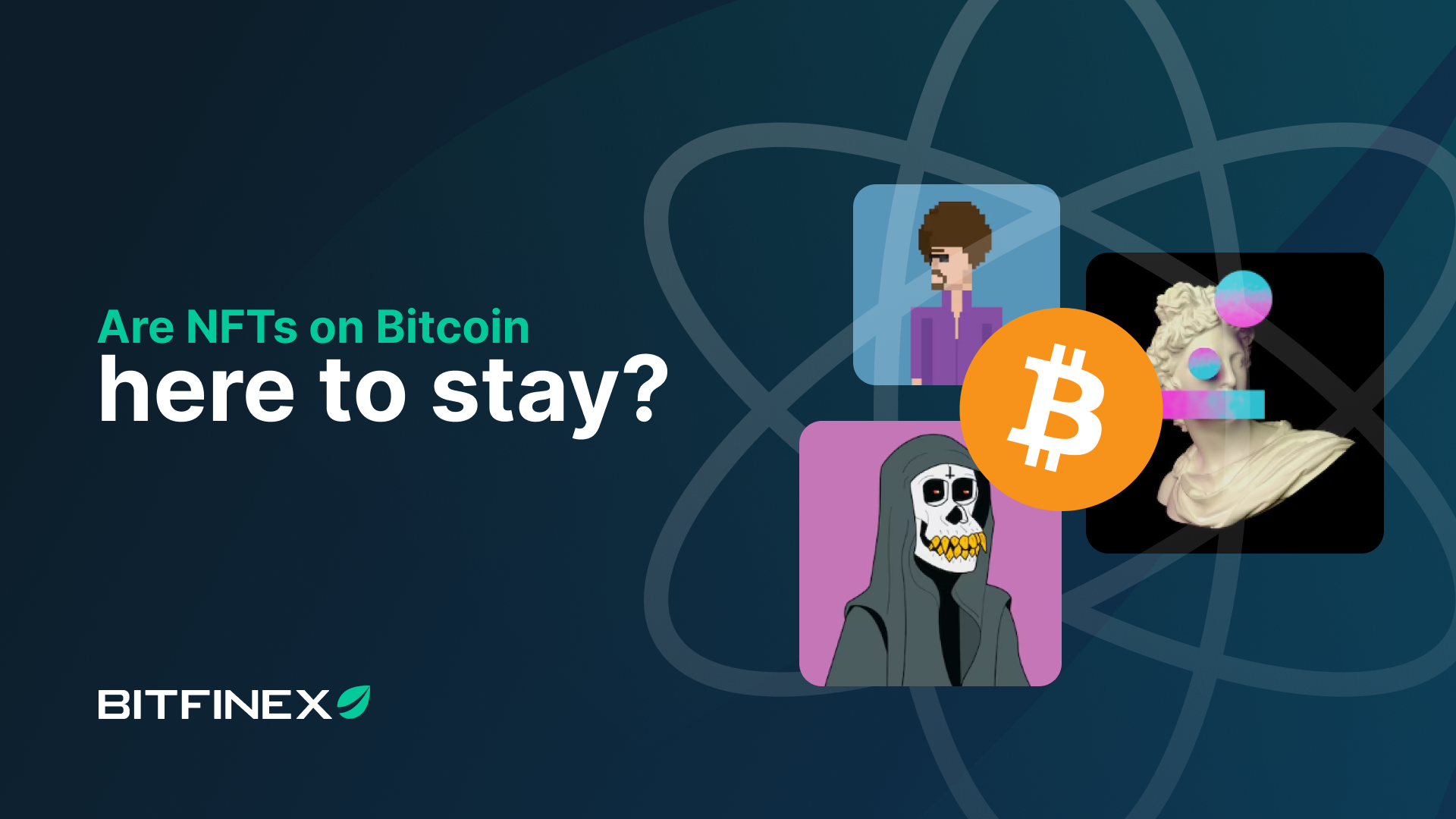
03 Feb Ordinals & Inscriptions: Satoshi-based NFTs on Bitcoin
Over the past week, the Bitcoin community has been locked in a heated debate over Ordinals and Inscriptions, a new way to create NFTs assigned to individual Satoshis, the smallest divisible unit of Bitcoin. Ordinals take advantage of Taproot & Segwit witness data to store JPEGs, Videos, or even playable games, but not everyone is onboard.
Love them or hate them, it looks like Ordinals are here to stay
Ordinal Theory is the fundamental idea behind Ordinals, a new protocol which allows for the creation of Bitcoin-native digital artefacts assigned or “inscribed” to individual Satoshis to imbue them with certain non fungible characteristics common in traditional NFTs. These on-chain digital artefacts are known as “Inscriptions”.
Inscriptions leverage capabilities based on the recent Taproot Bitcoin soft fork to store inscription content in Taproot script-path spend scripts. Taproot scripts have fewer limitations, allowing for the inclusion of inscription content in Taproot outputs, and also benefit from the transaction discount afforded to Segwit witness data.
Ordinal theory was created by Casey Rodarmor, a Bitcoin developer and one of the organisers of the SFBitcoinDevs meetup group. Since Ordinals were announced, it’s sparked a lot of conversation on social media around exactly what kind of data should be included in the Bitcoin blockchain’s transaction data.
This argument has in fact been taking place amongst Bitcoiners for years, even before the invention of Ordinals, and actually goes back to early Bitcoin tokenisation projects like Omni and Counterparty. Ordinals simply resurrected the old debate as a hot button issue, once again.
The argument surrounding Ordinals is not a new one
The argument basically boils down to this, blockchain due to its need to reach consensus doesn’t scale easily and is one of the biggest challenges facing global Bitcoin adoption. By including additional, non-financial data on the Bitcoin blockchain, it consumes precious blockspace which could possibly cause fees to rise and crowd out legitimate Bitcoin transactions.
This means people spending Bitcoin could have higher fees and long confirmation times on-chain, as they compete with transactions which include large amounts of non financial data like rare pepes (in the case of Counterparty), DNS info (in the case of BitDNS, which later became Namecoin), or in the most recent iteration, Inscription content data (in the case of Ordinals).
With prior projects like Omni, Counterparty, and BitDNS/Namecoin, the opposition from the Bitcoin community and added bloat to the base layer convinced these projects to find alternatives for achieving their goals. With Ordinals, there has been some debate about how since they are valid transactions paying for blockspace and within consensus rules, the transactions are valid Bitcoin transactions and the increased fees may be beneficial. Satoshi himself even advocated keeping non-financial data off the blockchain.
The pros and cons surrounding Ordinals & Inscriptions
Naysayers cling to the argument that it will make it harder for node operators to run full nodes, it will increase fees, bloat the chain, and could be detrimental in the future. As it stands though, Bitcoin blockspace is not entirely scarce, there are still unfull blocks, although as adoption increases negative effects from Ordinals Inscription data may be felt. Ordinals Inscription data is extra non-financial data, and will be forever included in the blockchain.
Additionally, inscribing non-fungible characteristics to Satoshis may have a negative impact on Bitcoin’s privacy and fungibility in the long run, as Satoshis with inscriptions are permanently different from Satoshis without inscriptions. This could harm Bitcoin’s overall fungibility, which is already imperfect and affects privacy. BTC’s individual coins have a history with “tainted” and “untainted” coins, and Bitcoin’s fungibility still has some room for improvement. Fungibility has long been another major challenge that Bitcoin has faced, which is on par with scalability as a barrier for global adoption as an open source monetary network used by all.
The kneejerk reaction to Ordinals from some Bitcoiners who oppose them has been to advocate censoring transactions in some extreme cases, to calling them useless and stupid in others, calling for a soft fork to impose data limits on witness data, and pointing out how inefficient and wasteful they are the way they are currently designed. Others have gone so far as to claim that Taproot has ruined Bitcoin because it has made it possible for Ordinals Inscriptions to be carried out using Taproot scripts in an unintended way.
Censorship of transactions containing Inscriptions may be possible for individual miners and it’s the right of any miner to decide for themselves, but it’s certainly not a behaviour which embodies the ethos of Bitcoin as a tool for global financial freedom and inclusion, regardless of if it’s well intentioned. Many Bitcoiners have urged caution at taking such extreme measures, as it is a slippery slope which could bring many unintended consequences.
Ordinals advocates poise the counterargument that these transactions are not adding that much bloat, that they are something the market wants, that they’re paying for the blockspace and the increased fees will benefit Bitcoin’s overall security model by providing income for miners after the Bitcoin block subsidy disappears after all halvings have been completed over the next 120 years. They also say that they are making Bitcoin fun and entertaining, and bringing altcoiners back to Bitcoin from popular altcoin chains due to this added functionality.
Regardless of which side of the debate you’re on, it’s very hard to deny the enthusiasm that the community has had for creating Inscriptions using Ordinals. Since they have gone public, hundreds of Inscriptions have been created ranging from rock jpegs, to popular Bitcoin memes, video clips, artwork, and even playable games, much to the chagrin of those who believe them to be a waste of Bitcoin’s scarce on-chain resources.
Do Ordinals have any staying power?
Some Bitcoiners point out that Ordinals may just be a short-lived meme, which may fizzle out as fees rise and less people find value in including them in transactions. At the time of launch, Bitcoin on-chain fees were about 1 Satoshi per byte, which is very low. Many see Ordinals and Inscriptions as a bear market novelty which won’t last through the next bull run, as transaction activity increases and fees rise on-chain.
A glance at the Ordinals website and github page, shows recent Inscriptions and transaction info from when they were minted, a wallet, a documentation handbook for those who want to get started, and future plans for the project. It remains unclear how long the Bitcoin community will stay interested in Inscribing Satoshis with artefacts to create digital collectibles, or if the fad will even catch on at all like it has in Web3 ecosystems.
Past efforts to bring Web3 style features to Bitcoin, either on side chains or secondary layers have been met with an underwhelming response on multiple occasions. It seems that Bitcoiners themselves are generally not interested in many Web3 novelties or use cases, and Altcoiners in Web3 ecosystems aren’t very interested in Bitcoin’s somewhat restrictive base layer conservatism.
As it stands, Ordinals are new, and a lot of excitement seems to be surrounding them with many Bitcoiners calling NFTs on Bitcoin unavoidable. The debate is still raging on both Bitcoin Twitter and Nostr, and a lot of eyes are on the project to see where it may lead. Whether it’s good or bad for Bitcoin still remains to be seen, but it has definitely created a lot of great conversations around some of the technical reasons for why or why not Ordinals should be embraced, and if non-financial data should be included on-chain or off.



